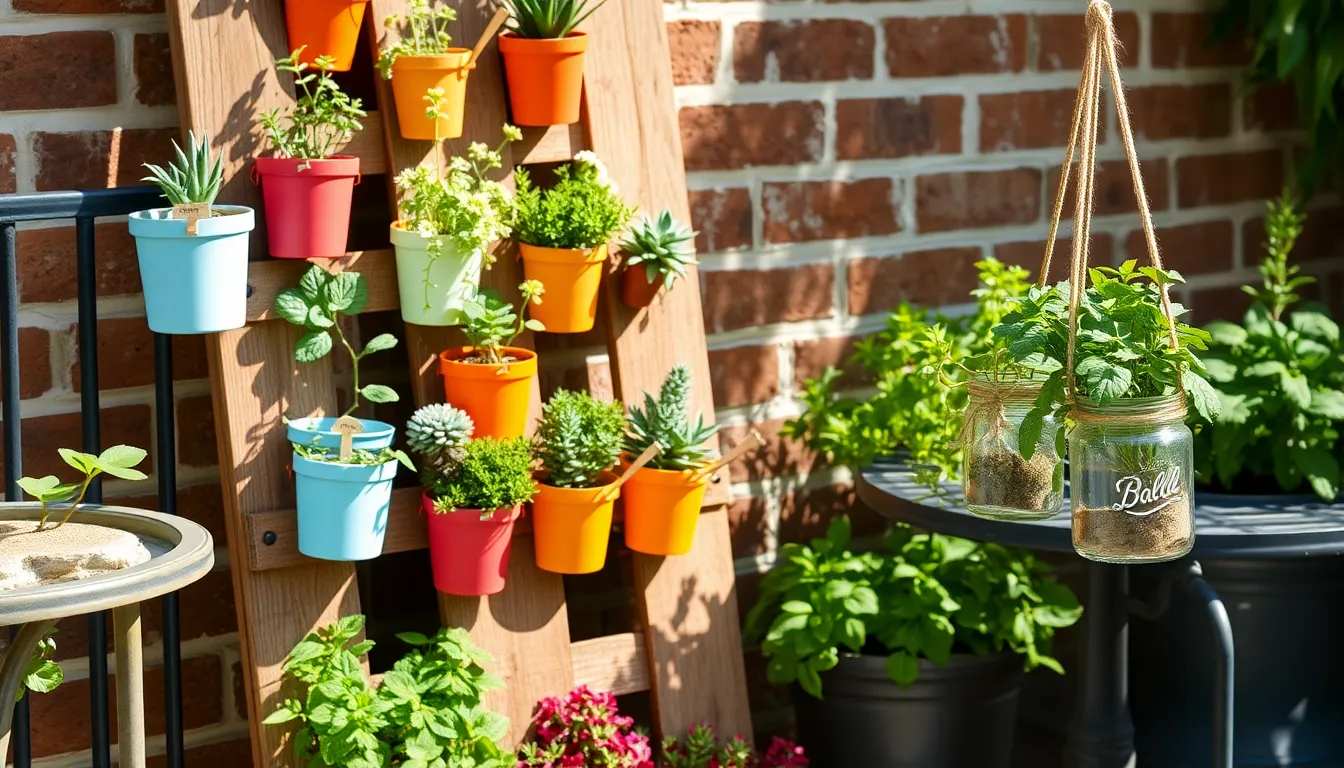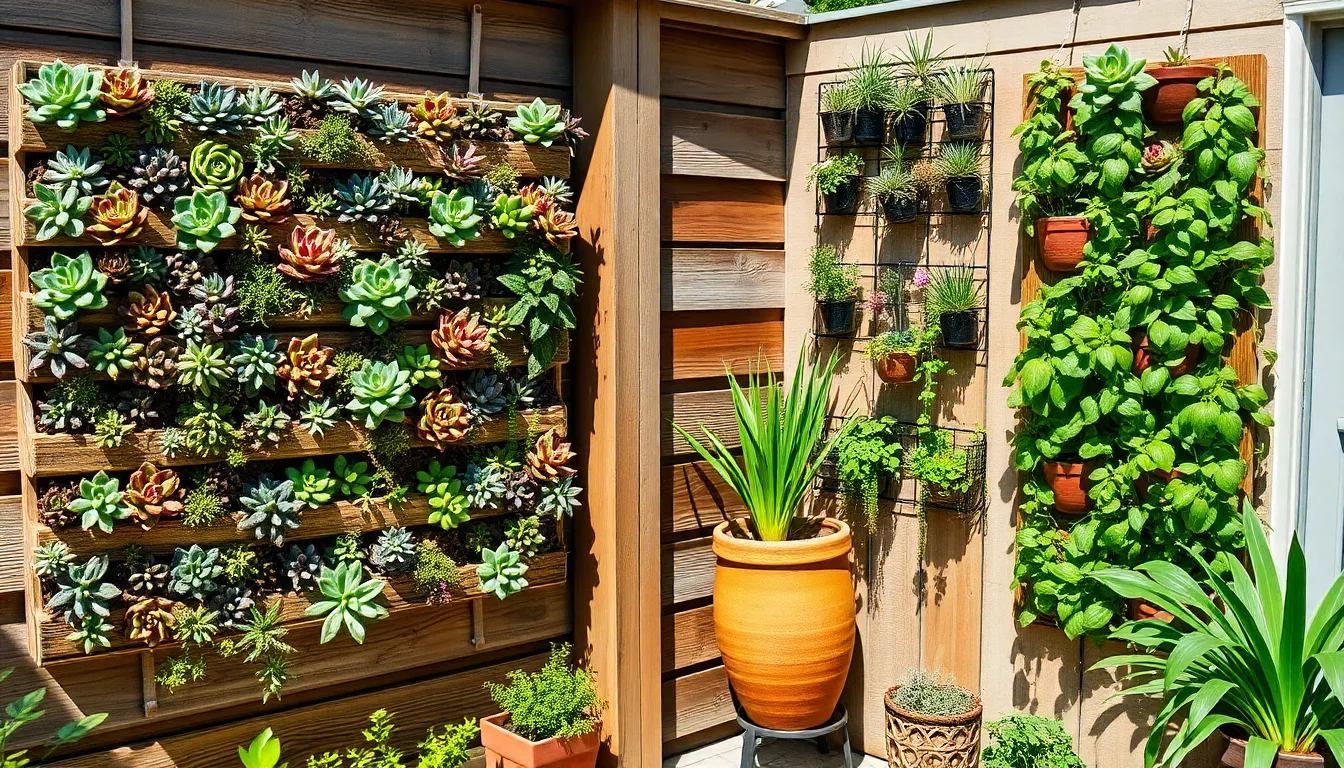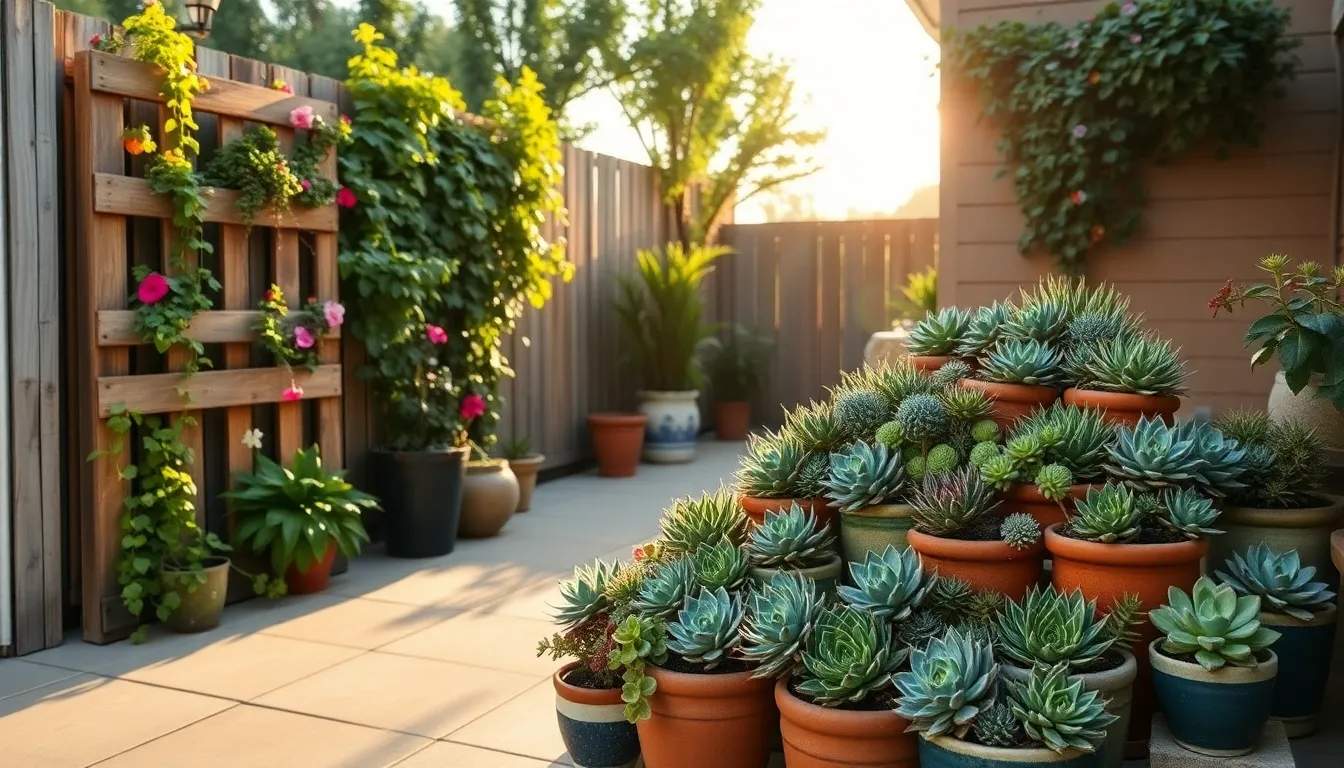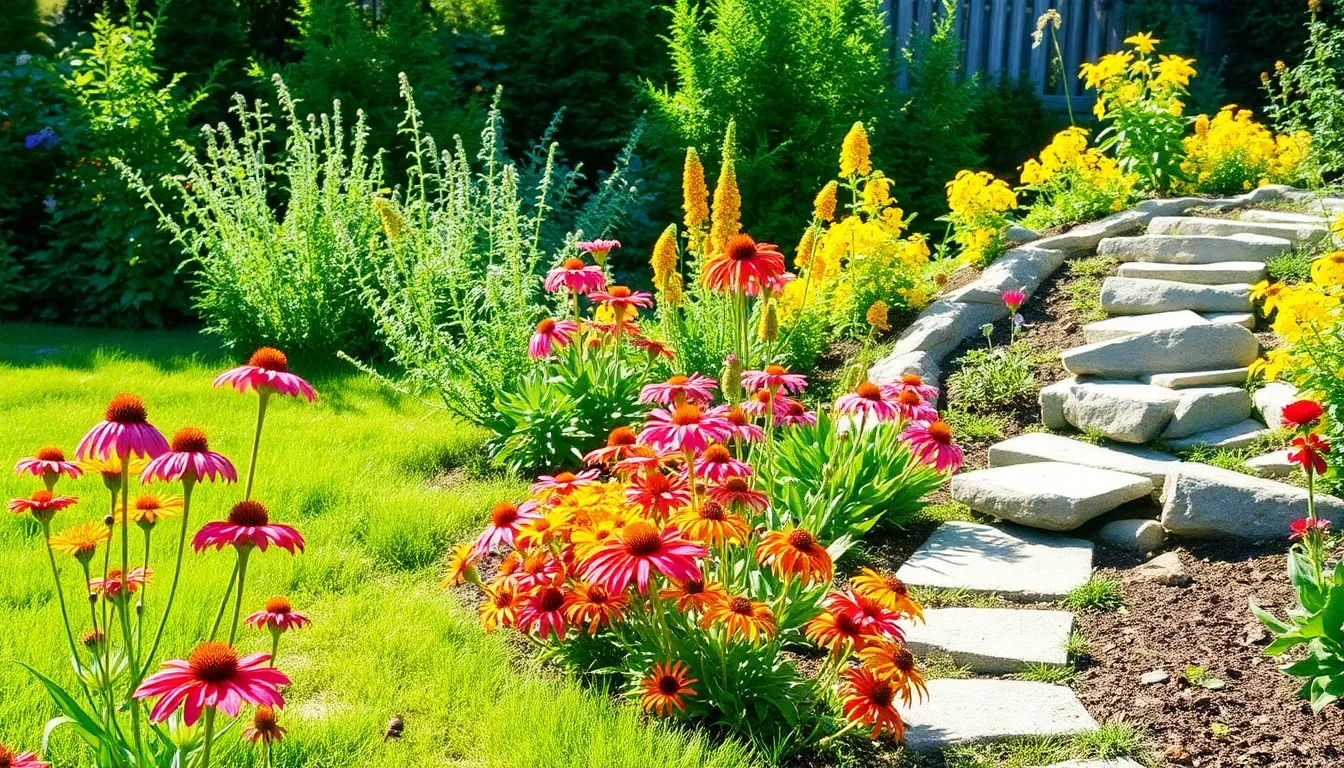Welcome to “14 Budget-Friendly Patio Garden Ideas,” where the magic of gardening meets the practicality of your wallet! Whether you’re just digging your hands into the soil for the first time or you’re a seasoned green thumb looking to refresh your space, this guide is your ticket to creating a lush, inviting patio without breaking the bank. Imagine the joy of sipping your morning coffee surrounded by vibrant blooms and lush foliage, all achieved with clever ideas that respect your budget.
In this collection, you’ll discover creative solutions that make gardening accessible and rewarding for everyone. From repurposing everyday items to selecting resilient plant varieties, these ideas are crafted to maximize beauty and utility while keeping expenses low. Expect to uncover new ways to transform your outdoor space into a personal oasis, filled with the rewards of nurturing living things and the satisfaction of a job well done. With each page, you’ll gain confidence and inspiration, knowing that a thriving patio garden is within your reach, no matter your level of experience.
Repurpose Containers for Planting
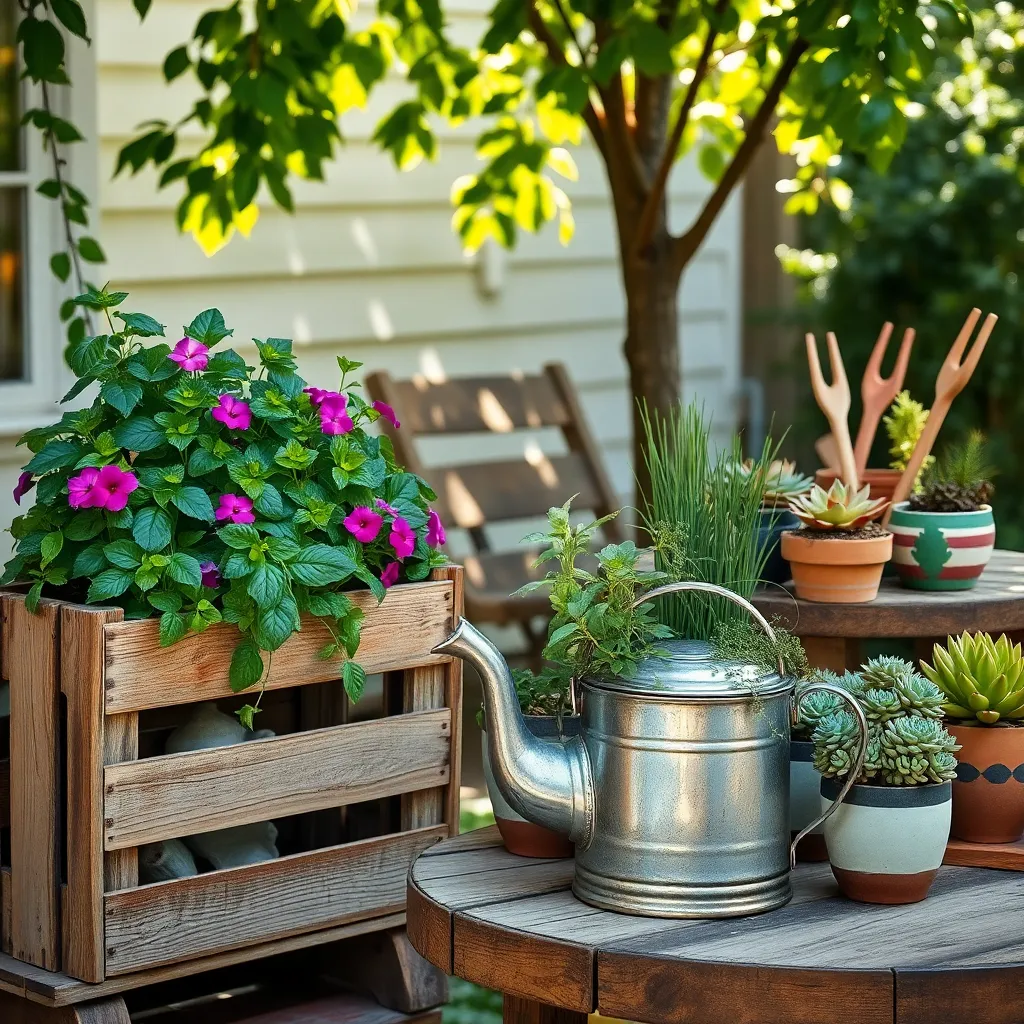
Repurposing containers for planting is a fantastic way to save money and reduce waste while adding character to your patio garden. Look around your home for items like old buckets, baskets, or even colanders that can be transformed into unique planters.
Ensure that any container you choose has adequate drainage to prevent waterlogging, which is crucial for healthy plant growth. If your chosen container doesn’t have drainage holes, you can easily drill or punch a few holes in the bottom to allow excess water to escape.
For beginners, start with easy-to-grow herbs like basil or mint, which thrive in a variety of containers and can handle varying sunlight conditions. Use a lightweight, well-draining potting mix to ensure your plants’ roots have plenty of air and proper moisture retention.
Advanced gardeners might want to experiment with more challenging plants, such as dwarf tomatoes or peppers, which can also do well in containers with the right care. Ensure these plants receive plenty of sunlight—about 6-8 hours per day—and use a sturdy container that can support their growth and weight.
When planting in repurposed containers, remember to adjust your watering schedule as containers can dry out faster than in-ground gardens. Regularly check the soil moisture by sticking your finger about an inch into the soil; if it feels dry, it’s time to water.
Grow Herbs from Kitchen Scraps
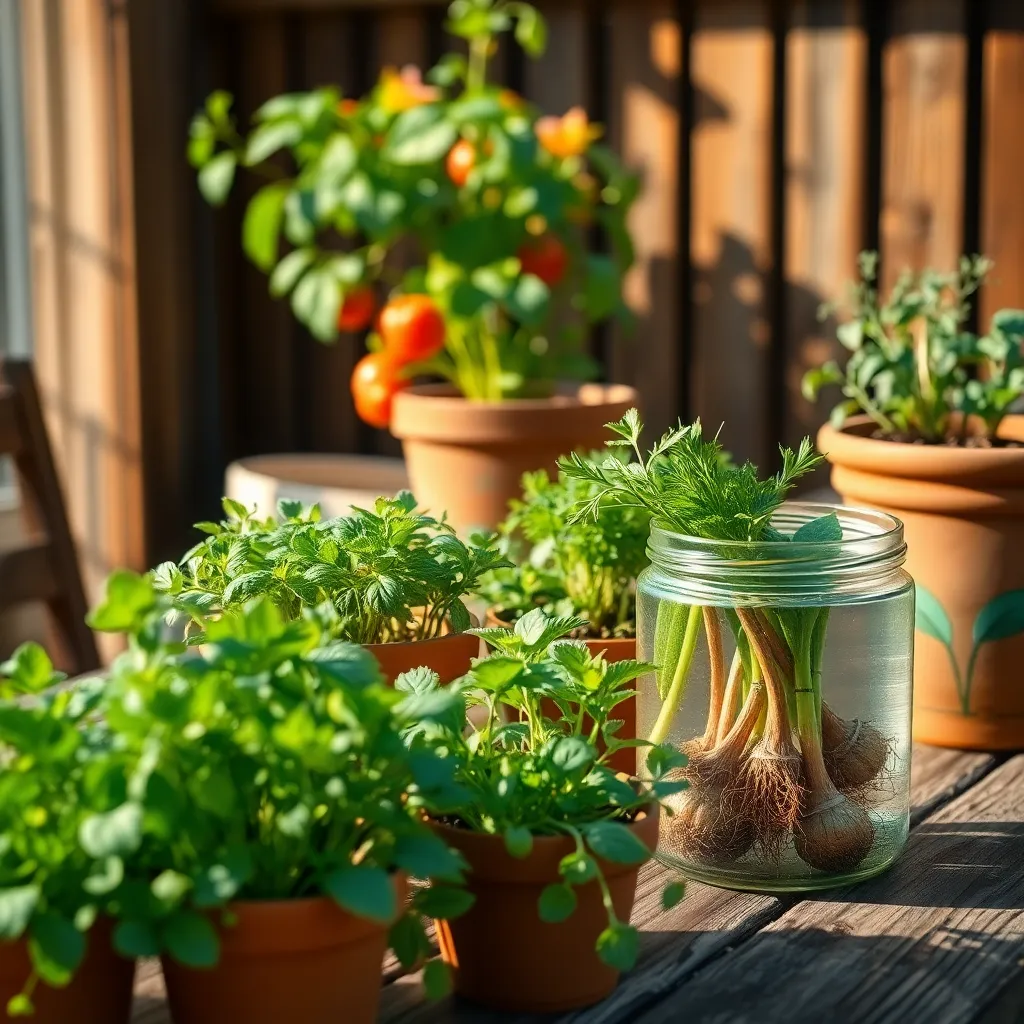
Starting a herb garden from kitchen scraps is an economical and rewarding way to enhance your patio garden. Begin with common herbs like basil, mint, and cilantro, which can easily regrow from small cuttings or roots.
To regrow basil, clip a 4-inch stem and remove the leaves from the bottom half. Place it in a glass of water, changing the water every few days, until roots develop—then transplant it into a pot with rich, well-draining soil.
Mint is another easy herb to propagate from scraps. Simply take a stem cutting with a few leaves and submerge it in water until roots appear, then plant it in a container with a mix of potting soil and compost for optimal growth.
Cilantro can be regrown from the bottom stems of a bunch. Stick the stems in a glass of water, ensuring there’s enough light, and once roots form, transfer them to a pot with loamy soil and ensure they receive at least six hours of sunlight daily.
For those looking to advance their herb-growing skills, consider experimenting with more challenging varieties like lemongrass. Lemongrass stalks can be placed in a jar with enough water to cover the roots, and once new growth appears, they thrive in a warm, sunny location.
Adapting these methods can significantly cut down on grocery bills while providing fresh ingredients for your kitchen. Not only does growing herbs from scraps save money, but it also contributes to a sustainable lifestyle, reducing waste and enhancing the beauty of your patio garden.
Use Vertical Space Creatively
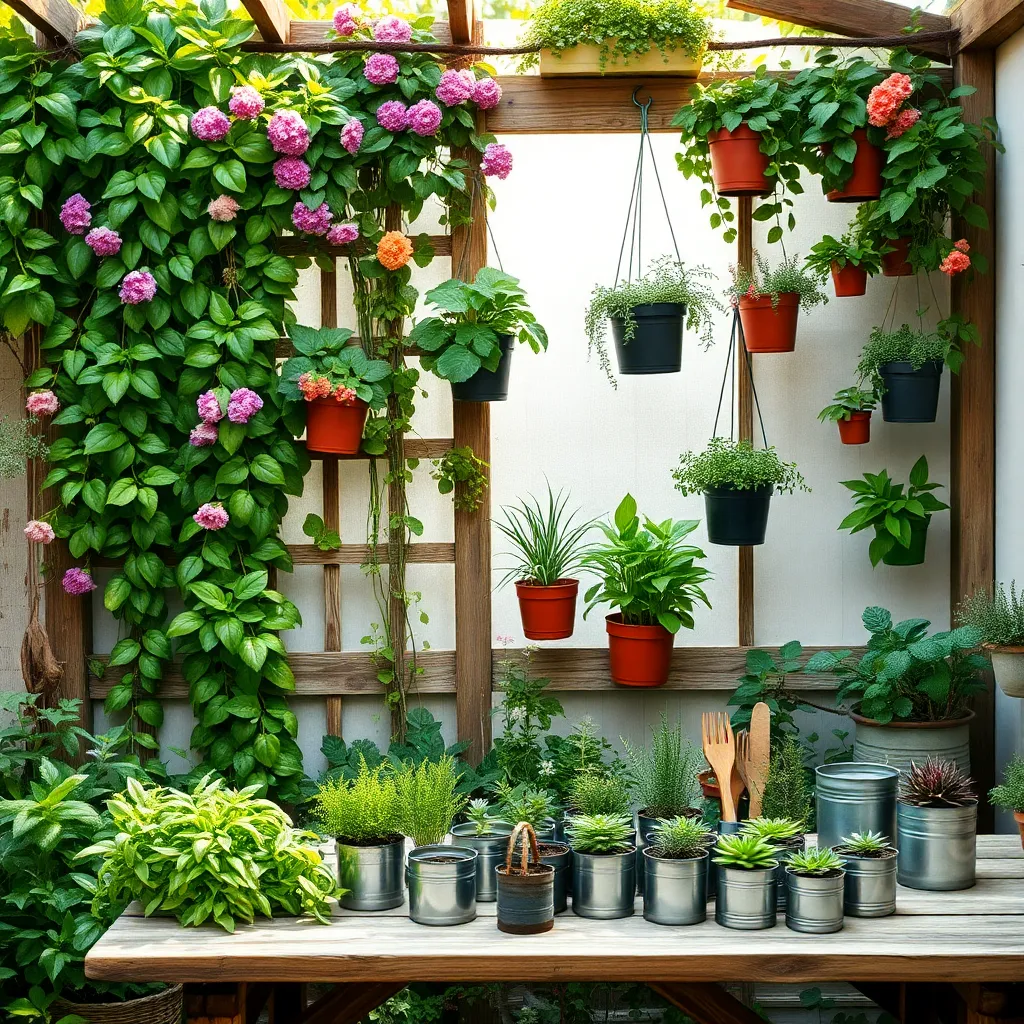
Vertical gardening is an excellent way to maximize space, especially on a small patio. Start by choosing sturdy structures, like trellises or wall planters, to support your plants.
Consider using a variety of plants, such as climbers, to fill your vertical space creatively. **Climbing plants** like beans, peas, or even flowering vines like clematis can add both greenery and color.
For beginners, **installing wall planters** is a great starting point. These can hold small pots of herbs or succulents, which require minimal maintenance.
Advanced gardeners might explore **living walls**, which are panels filled with a mix of plants. Ensure these walls have good drainage and use a lightweight potting mix to prevent structural damage.
When selecting plants for vertical gardens, consider their **light requirements**. Depending on your patio’s orientation, choose plants that thrive in either full sun or shade.
**Regular watering** is crucial for vertical gardens, as they tend to dry out faster than traditional gardens. Implementing a drip irrigation system can help maintain consistent moisture levels.
Start Seeds Indoors Early
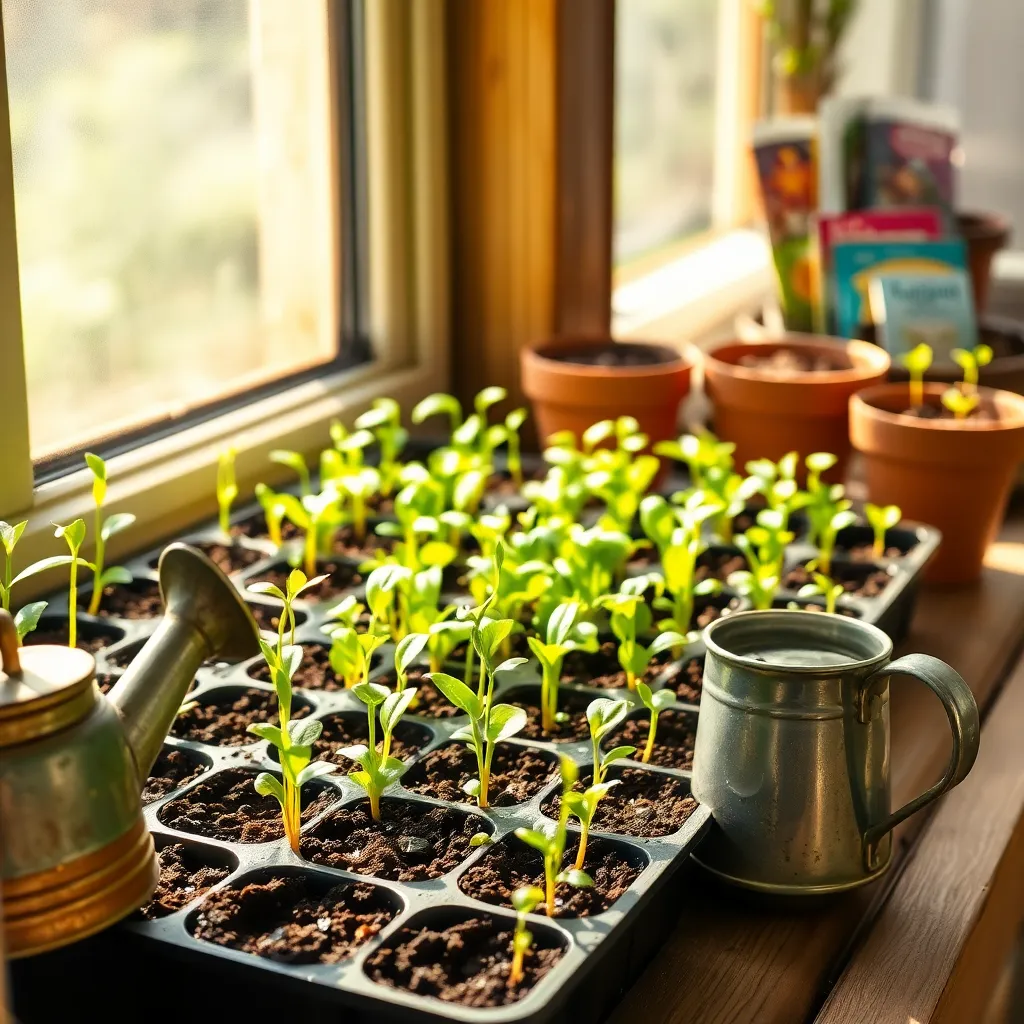
Starting seeds indoors early is a fantastic way to jumpstart your patio garden while saving money. By controlling the environment, you can ensure your plants get the best start possible, leading to healthier growth and earlier harvests.
For beginners, choose seeds that are easy to grow indoors, such as tomatoes, peppers, and herbs like basil and parsley. Use a seed-starting mix that is light and well-draining to provide the ideal conditions for seed germination.
Advanced gardeners might experiment with different light setups to optimize growth, such as using LED grow lights to simulate sunlight. Position your lighting system about 2-3 inches above the seedlings, adjusting as they grow to prevent them from becoming leggy.
Ensure that you water your seedlings consistently but avoid waterlogging, which can lead to root rot. A humidity dome can help retain moisture and warmth, creating a mini-greenhouse effect for your seedlings.
Before transplanting, gradually acclimate your seedlings to outdoor conditions through a process called hardening off. Start by placing them outside for a few hours a day, gradually increasing the time over a week to minimize transplant shock.
Install DIY Drip Irrigation
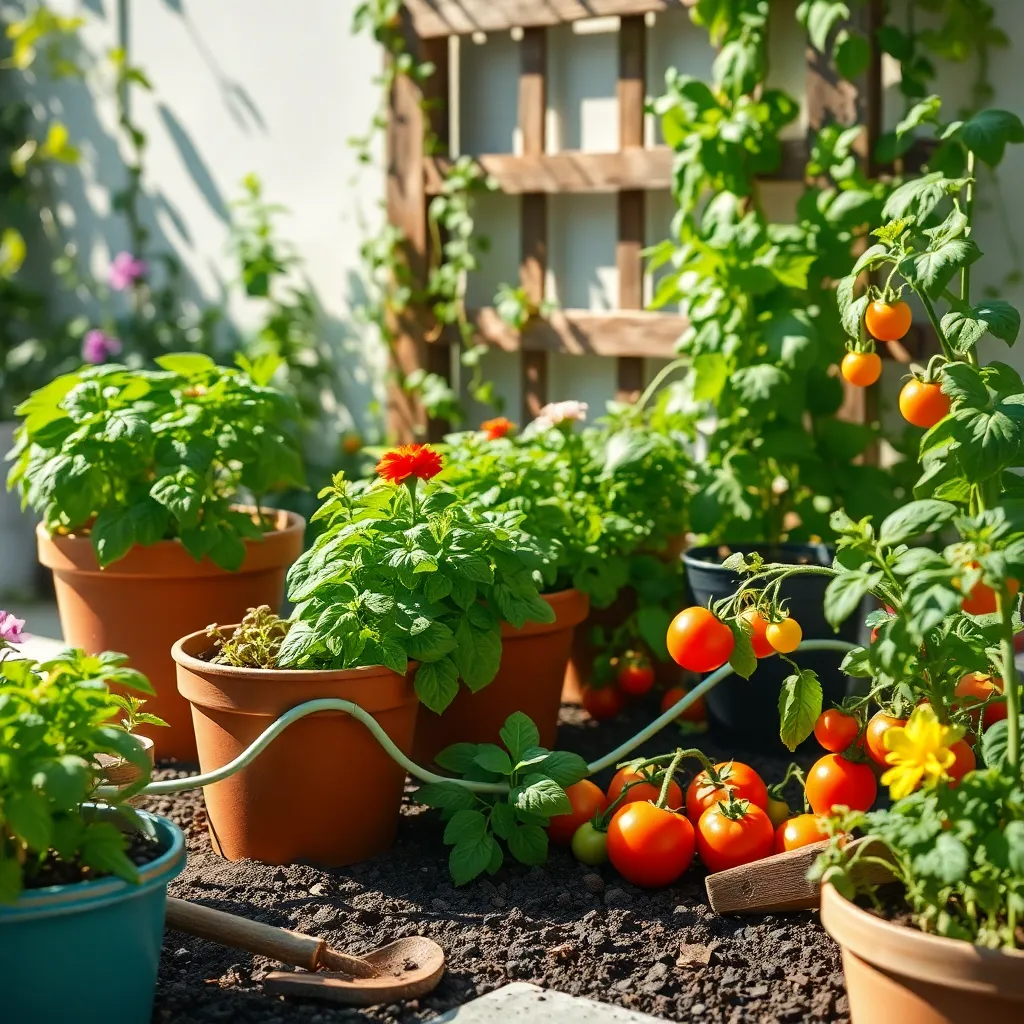
Drip irrigation is a simple yet effective way to ensure your patio plants receive consistent moisture without over-watering. By setting up a DIY drip system, you can save water and time while promoting healthy plant growth.
To start, gather essential components like a water source, tubing, emitters, and connectors. You can find drip irrigation kits at most garden centers, which simplify the installation process for beginners.
Lay out the tubing to reach all your plants, cutting and connecting sections as needed. Position emitters at the base of each plant to deliver water directly to the roots, minimizing evaporation and run-off.
For advanced efficiency, consider installing a timer to automate your watering schedule. This ensures your plants get the right amount of water, even when you’re not around to monitor them.
Create a Pallet Planter Wall
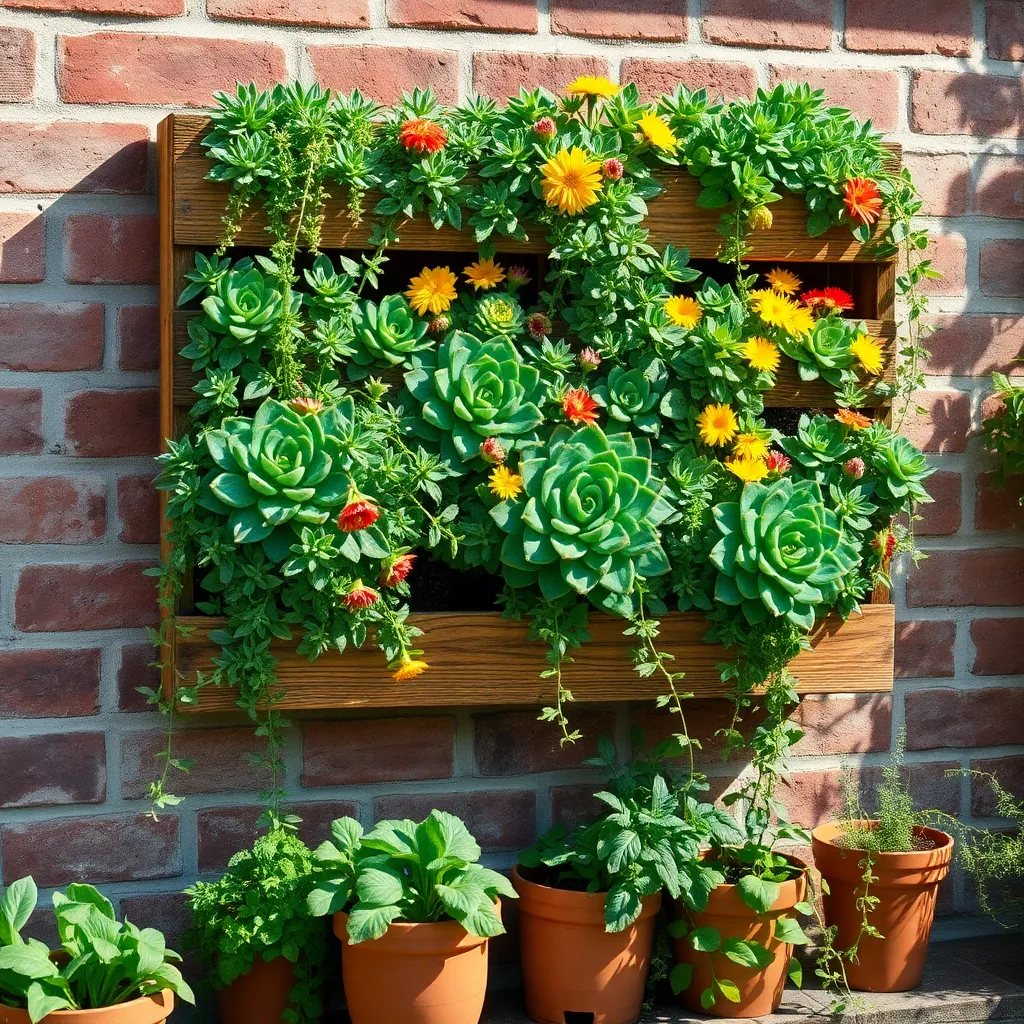
Transform a wooden pallet into a stunning vertical garden with just a few tools and some creativity. Begin by selecting a sturdy pallet that is free of chemicals or treatments, as these can harm your plants.
Line the back and sides of the pallet with landscape fabric to keep the soil in place. Secure the fabric with a staple gun, ensuring it’s tight and well-fitted to prevent soil from spilling out.
Fill the pallet with a high-quality potting mix that retains moisture yet drains well. Consider adding a slow-release fertilizer to the soil to provide your plants with essential nutrients over time.
Choose plant varieties that thrive in your climate and suit the light conditions of your patio. Herbs like basil and thyme, or succulents such as sedum, are excellent choices for sunny spots.
Water your pallet planter thoroughly after planting and continue to water as needed, typically once or twice a week. Always check the soil moisture by sticking your finger an inch deep into the soil; water if it feels dry.
For more advanced gardeners, consider incorporating an automatic drip irrigation system to ensure consistent watering. This can be particularly useful during hot summer months when plants require more frequent hydration.
Regularly prune and deadhead your plants to encourage lush growth and prevent overcrowding. Keep an eye out for pests and treat any infestations promptly to maintain a healthy garden.
Recycle Water for Irrigation
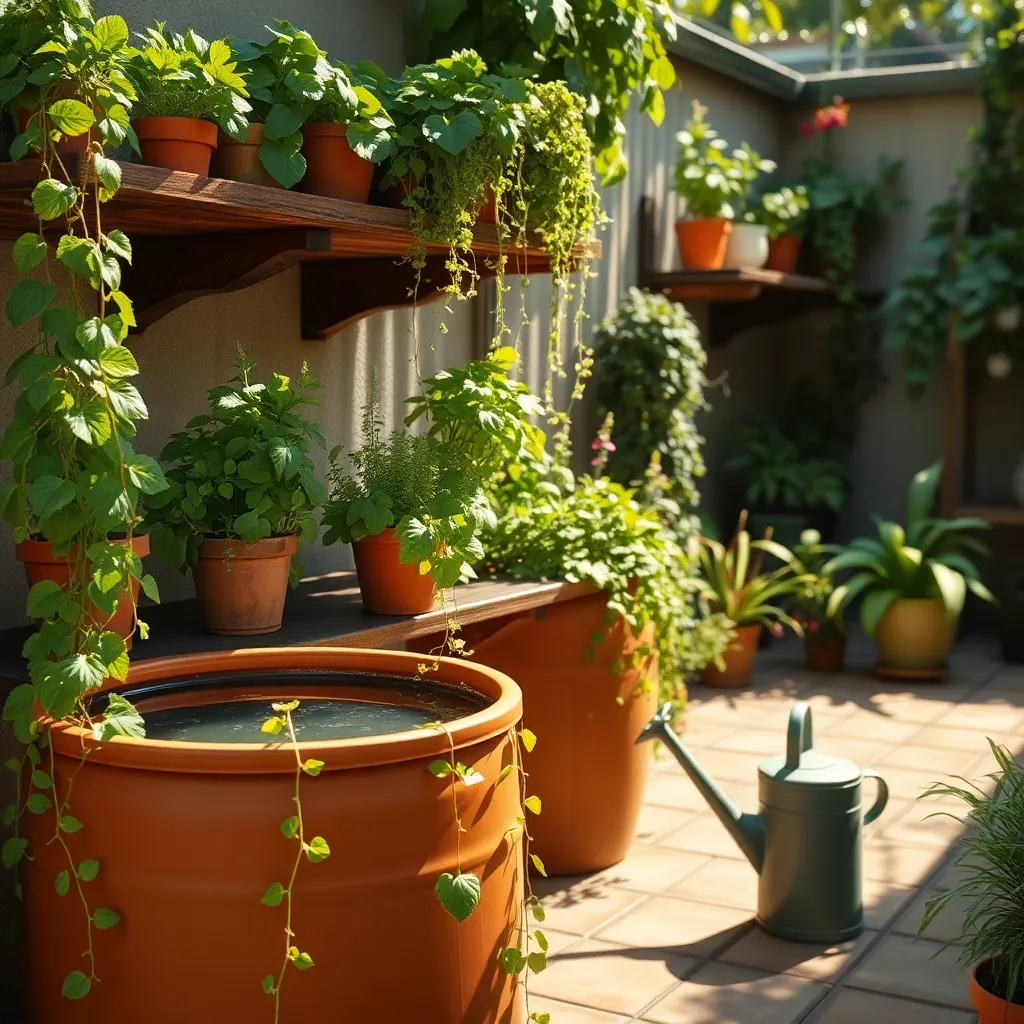
Repurposing water for your patio garden is a fantastic way to conserve resources and keep your plants thriving. Collecting rainwater can be an effective method; simply set up barrels or buckets under downspouts to gather runoff during a storm.
Greywater from your home can also be a valuable resource for irrigation. Use water from baths, sinks, and washing machines, ensuring that it’s free of harsh chemicals and detergents, making it safe for plants.
Start small by using this recycled water for non-edible plants, such as ornamental flowers or shrubs, to test its effectiveness. Gradually, as you gain confidence, expand the usage to your entire patio garden, including edible plants, once you’re sure of the water’s safety.
One practical tip is to water your plants during the cooler parts of the day, such as early morning or late afternoon. This minimizes evaporation and ensures that the plants can absorb the maximum amount of moisture.
For those with a bit more space, consider setting up a DIY irrigation system using recycled water. A simple setup involves connecting a drip line to your rainwater collection system, allowing for precise and efficient watering of your patio garden.
Opt for Low-Cost Mulch Options
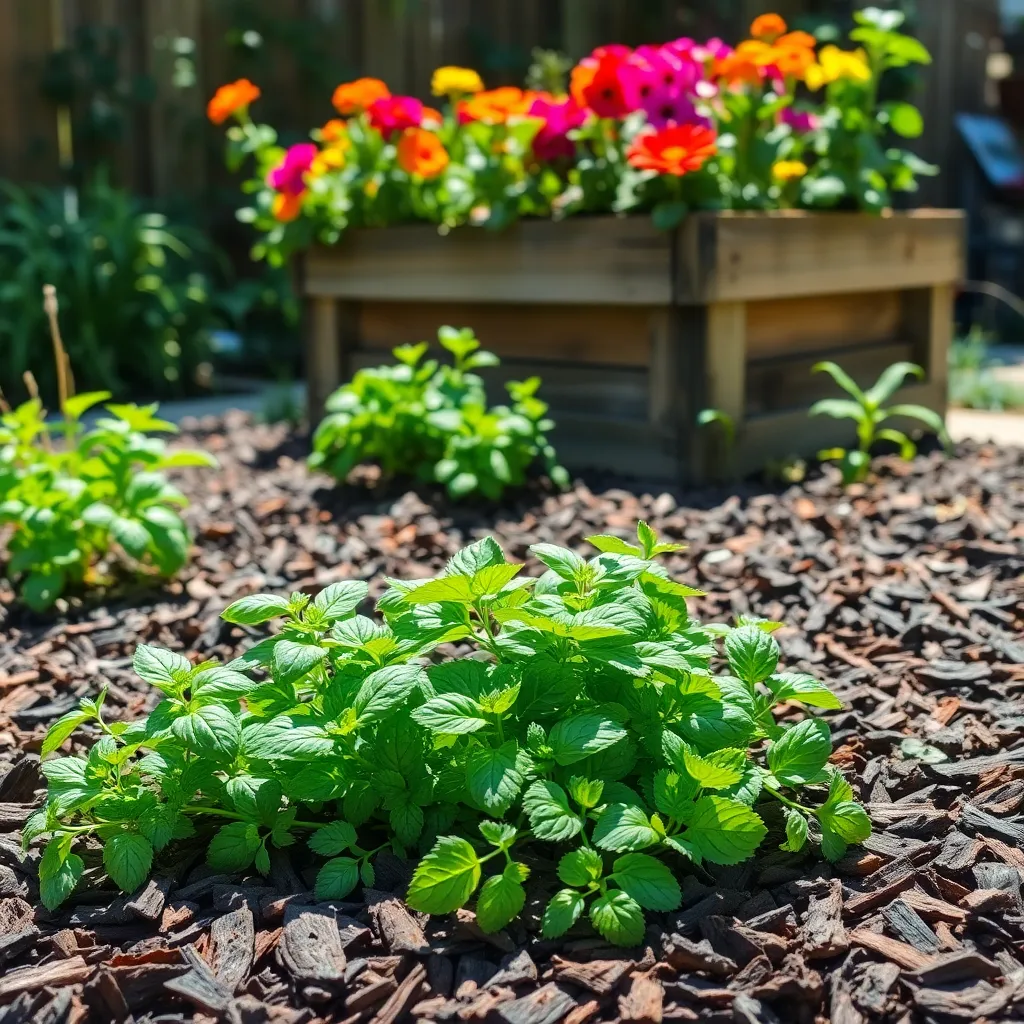
Consider using low-cost mulch options to enhance your patio garden while staying within budget. Mulch not only retains soil moisture but also suppresses weeds, making it an essential component for any gardener.
Start by looking around your yard for free, natural materials like fallen leaves or grass clippings. These materials are readily available and provide excellent coverage, helping to keep the soil cool and moist.
Shredded newspaper is another budget-friendly mulch option that can be easily sourced. Be sure to use black-and-white print, as colored inks may contain chemicals that are harmful to plants.
For those who want to try something a bit different, straw or hay can be an effective mulch, particularly for vegetable gardens. Apply a layer about two to three inches thick to effectively prevent soil compaction and erosion.
Paint Pots for a Fresh Look
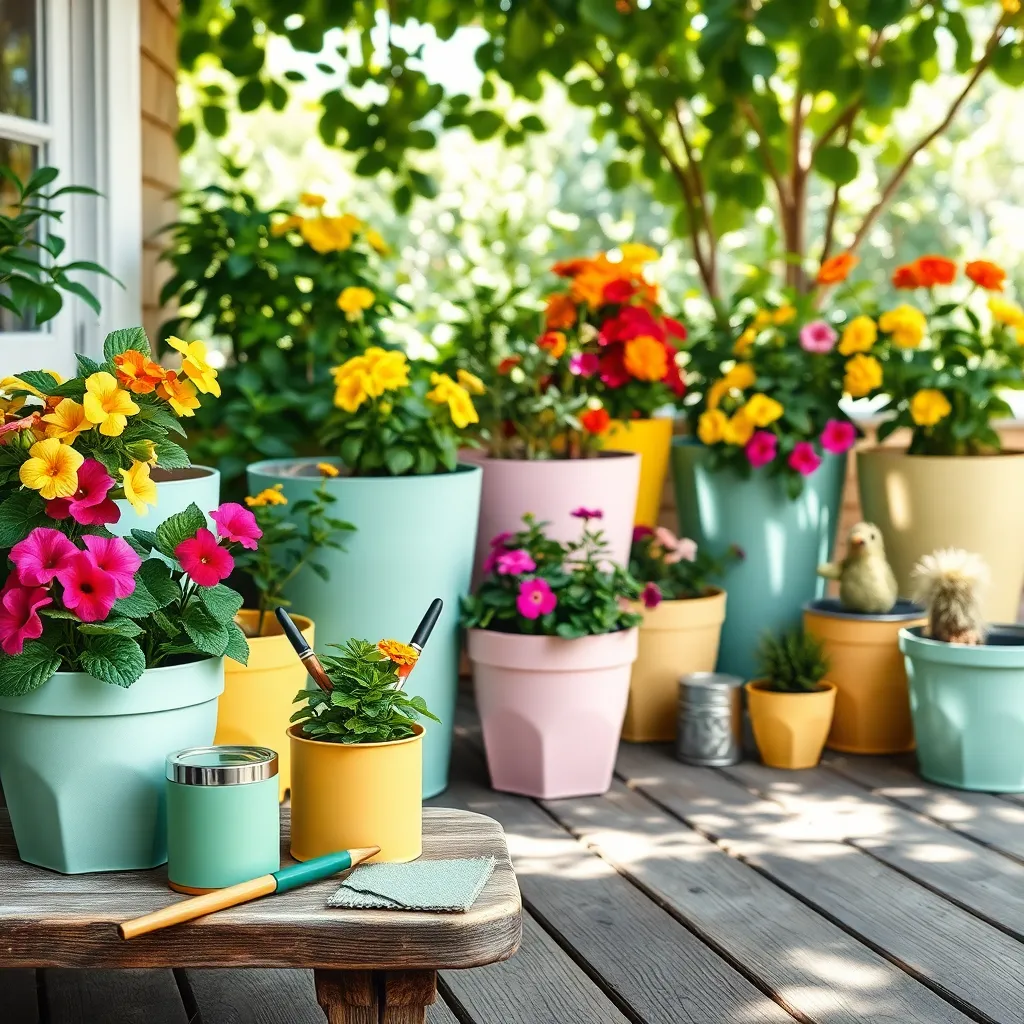
Transforming plain pots with a fresh coat of paint is an inexpensive way to add color and style to your patio garden. Start by choosing a durable, outdoor-safe paint to ensure it withstands the elements and maintains its vibrant look over time.
Before you begin painting, clean the pots thoroughly to remove any dirt or residue. A light sanding can help the paint adhere better, especially on smooth, glazed surfaces.
Choose colors that complement your plant selection to create a cohesive and inviting space. For example, bright hues can enhance the look of lush green foliage, while pastels might beautifully frame colorful blooms.
Once painted, let the pots dry completely before planting to avoid any interference with the drying process. Consider using a clear sealant to add an extra layer of protection against moisture.
For a more advanced project, try adding patterns or stencils to your pots for unique designs. This can be a fun way to personalize your garden and experiment with different artistic techniques.
Remember to use quality potting soil suitable for your plants, as the right medium supports healthy root growth. Regularly check your painted pots for any signs of wear and touch up the paint as needed to keep them looking fresh.
Choose Perennials Over Annuals
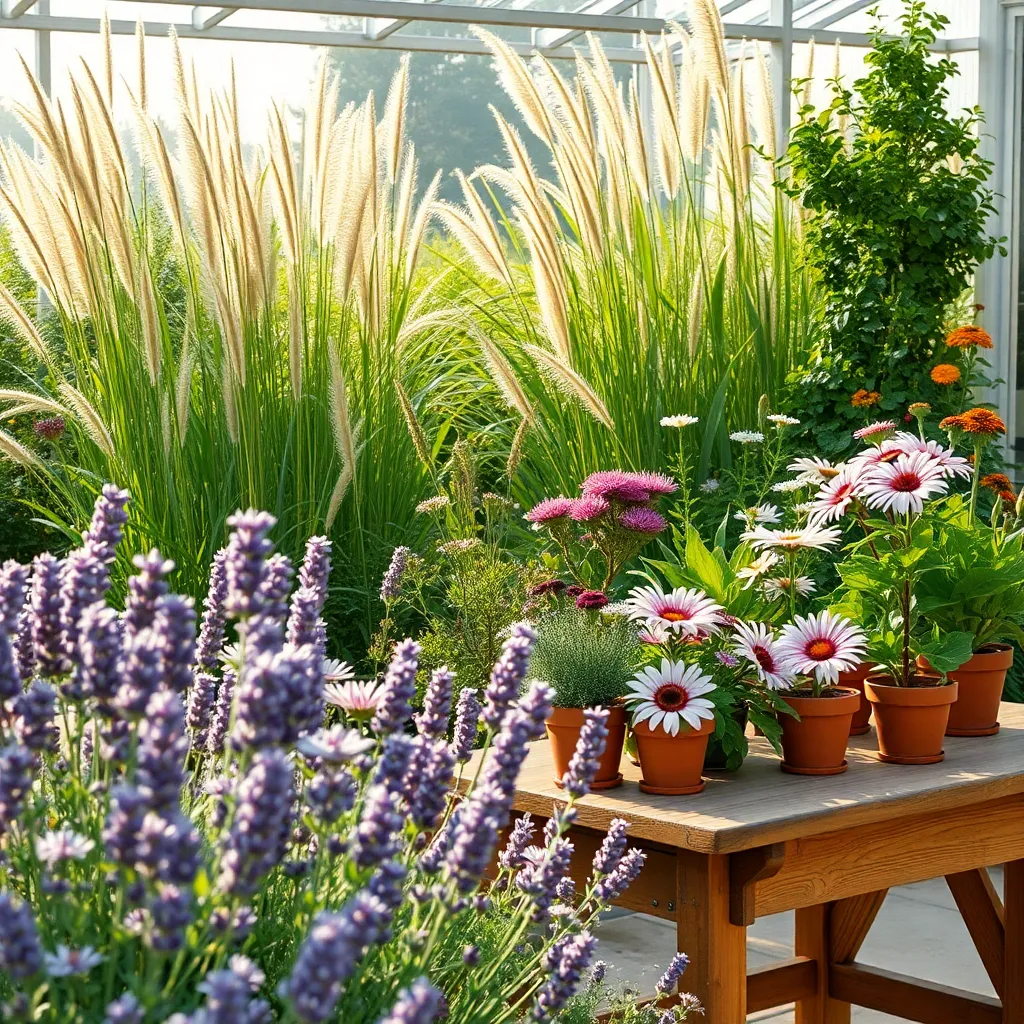
Opting for perennials over annuals is a smart move for any budget-conscious gardener. Perennials return year after year, saving you the cost and effort of replanting each season.
Begin by selecting perennials that thrive in your climate zone to ensure success. Consider hardy options like hostas, daylilies, and ornamental grasses for a low-maintenance patio garden.
Most perennials prefer well-draining soil enriched with organic matter. Mix compost into your soil to provide essential nutrients, promoting healthier, long-lasting plants.
Watering needs vary among perennial species, but a general rule is to keep the soil evenly moist. During the first growing season, pay extra attention to watering to help your plants establish strong roots.
For those with more experience, try dividing your perennials every few years. This not only rejuvenates the plants but also allows you to expand your garden without additional costs.
To maximize blooms, deadhead spent flowers regularly and apply a balanced fertilizer in early spring. This encourages new growth and keeps your perennials thriving throughout the season.
Swap Plants with Neighbors
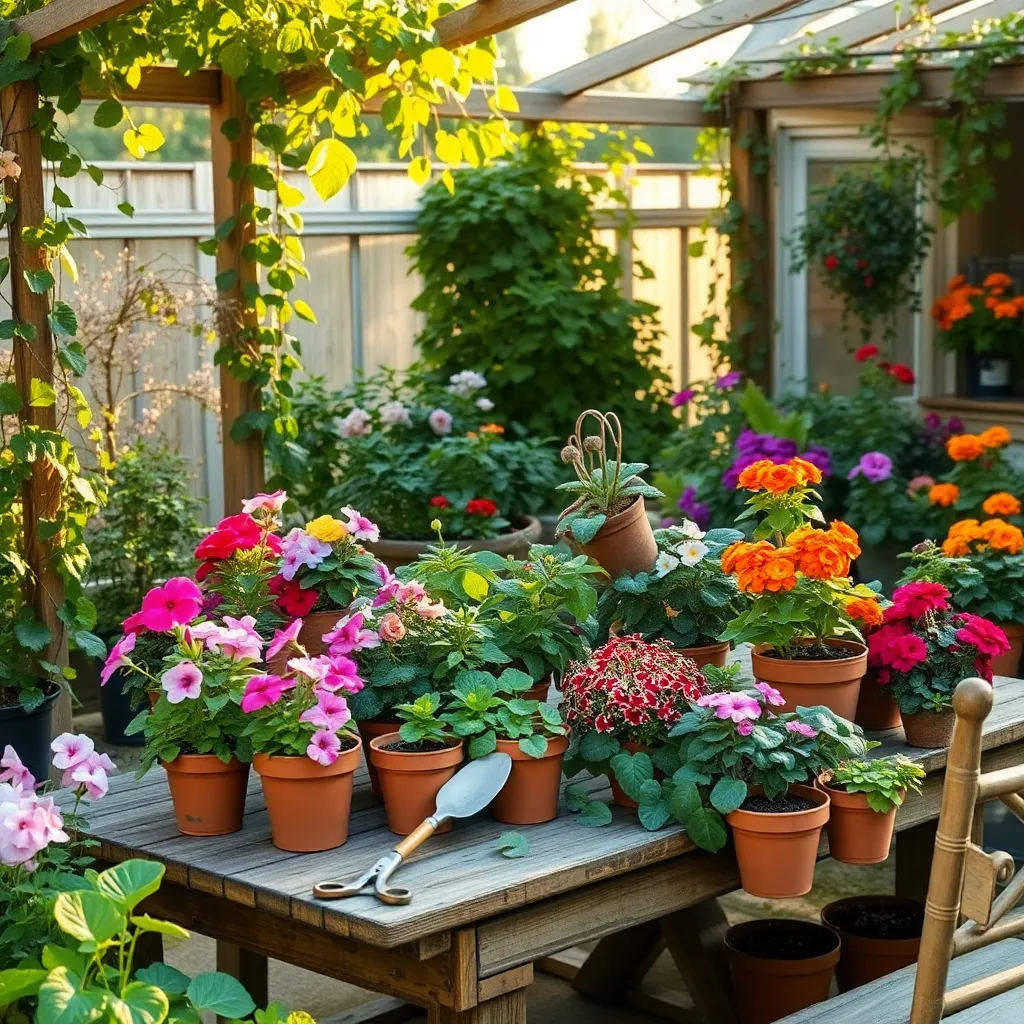
One of the most enjoyable ways to enrich your patio garden is by swapping plants with neighbors. This approach not only enhances your plant variety but also builds a sense of community among fellow gardeners.
Start by identifying plants in your garden that are thriving and easy to propagate. **Succulents, herbs, and perennials** like daylilies and hostas are great candidates for sharing, as they often multiply quickly and require minimal maintenance.
To ensure successful swaps, discuss the growing conditions each plant prefers with your neighbors. **Consider soil types, sunlight exposure, and watering needs** to match plants with the right home, ensuring they continue to flourish after the exchange.
Advanced gardeners might consider exchanging seeds or cuttings for more challenging plants. **This can be a great opportunity to experiment with new varieties** while benefiting from the knowledge and experience of others in your community.
Compost Kitchen Waste Efficiently
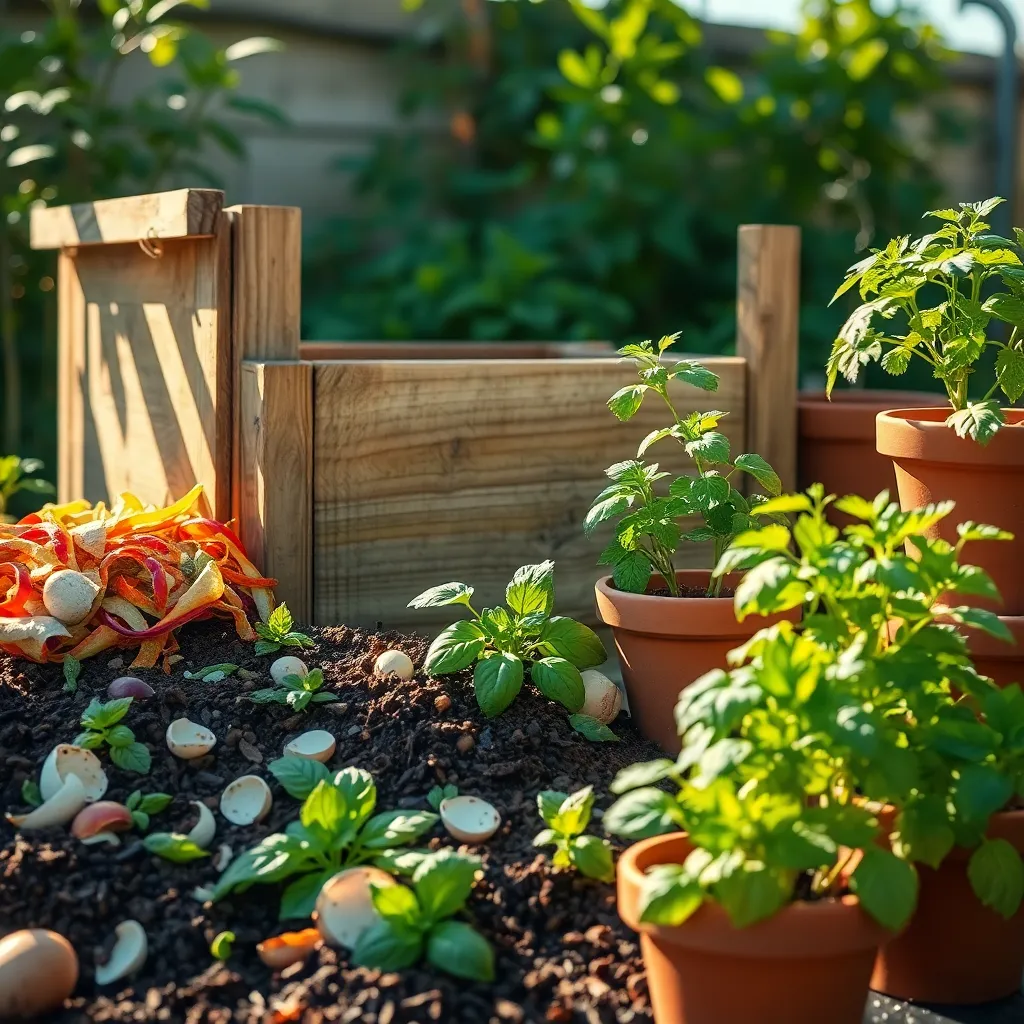
Transforming kitchen waste into nutrient-rich compost is a fantastic way to enhance your patio garden without spending a dime. Start by collecting fruit and vegetable scraps, coffee grounds, and eggshells, ensuring they are free from oils and meats.
Using a small bin or container, layer your kitchen scraps with dried leaves or shredded paper to maintain a balance of green and brown materials. Keep the compost moist but not soggy, and turn it regularly to aerate and speed up the decomposition process.
Composting is not only budget-friendly but also environmentally beneficial, reducing waste while enriching your soil. For those with limited space, consider a compact compost tumbler or a worm bin to efficiently manage decomposition on a small patio.
Advanced gardeners can experiment with adding crushed eggshells to boost calcium levels, benefiting plants like tomatoes and peppers. Use finished compost as a top dressing or mix it into potting soil to improve plant health and encourage lush growth.
Use Natural Pest Deterrents
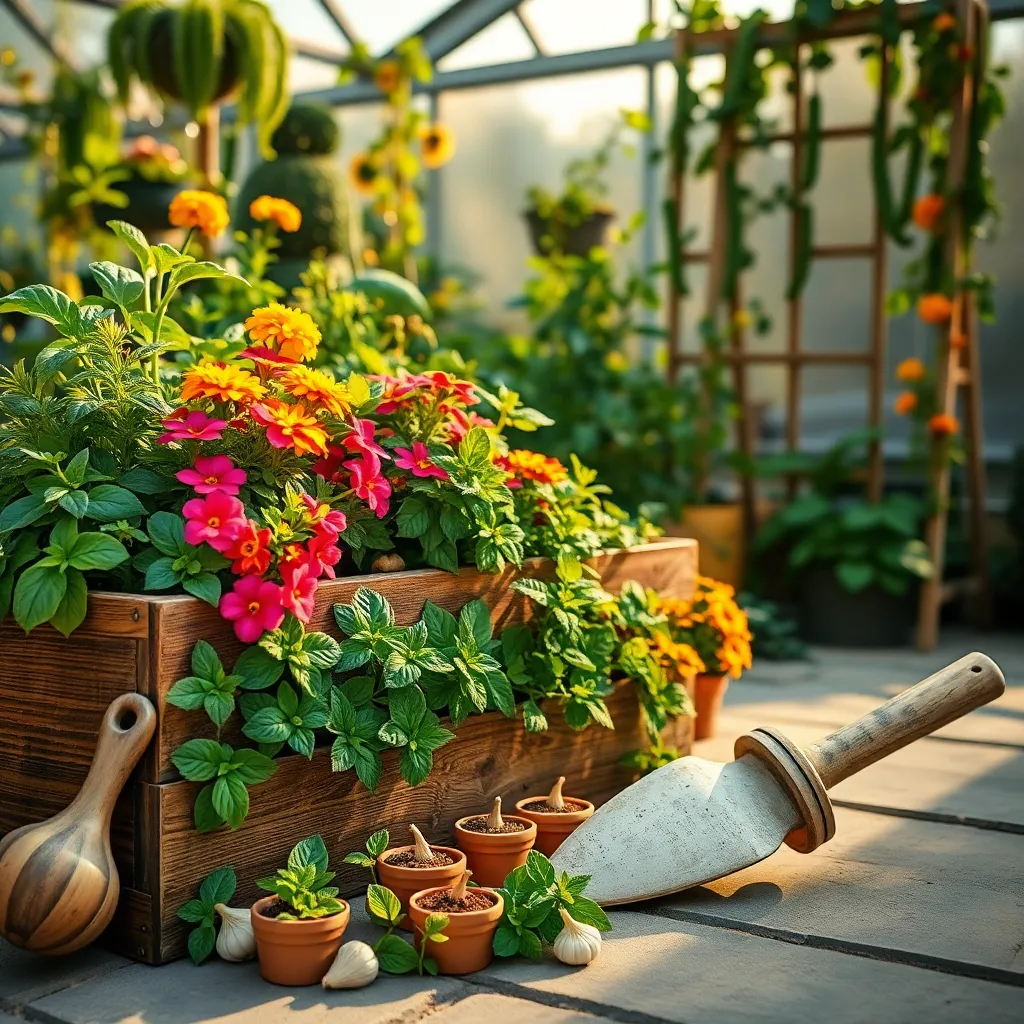
Integrating natural pest deterrents into your patio garden can significantly reduce the need for chemical pesticides. Consider planting companion plants that repel pests, such as marigolds, which deter aphids and whiteflies.
Another effective method is making use of homemade sprays from common kitchen ingredients. For example, a mixture of water and a few drops of dish soap can help control soft-bodied insects like aphids and spider mites.
To deter larger pests, like slugs and snails, try using crushed eggshells around the base of your plants. The sharp edges are uncomfortable for these pests to navigate, creating a natural barrier.
For those looking to attract beneficial insects, consider planting herbs such as dill and fennel. These plants attract ladybugs and lacewings, which are natural predators of many common garden pests.
Hang Plants to Save Space
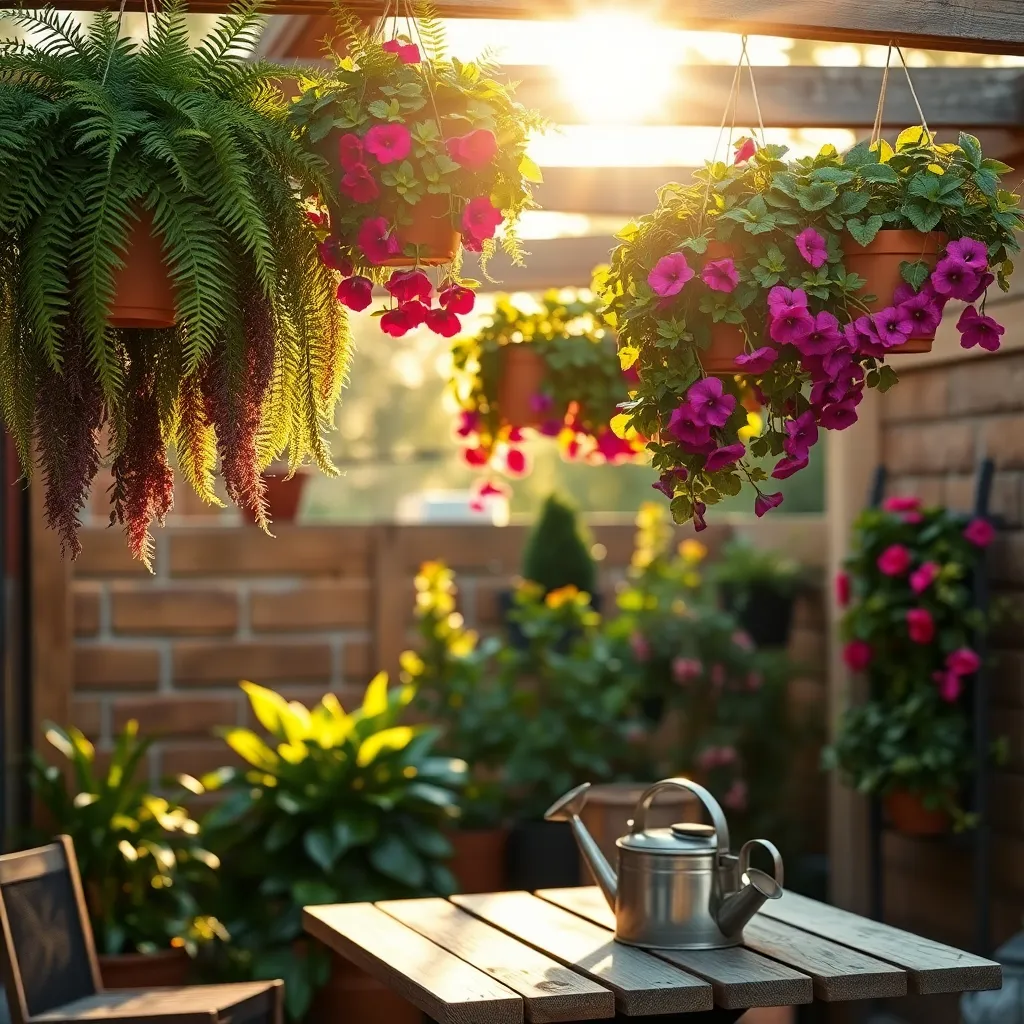
Hanging plants can transform your patio into a lush, green oasis while saving valuable space. Consider using hanging baskets or vertical planters to add greenery without cluttering your patio floor.
For beginners, start with hardy plants like pothos or spider plants, which thrive in indirect light and require minimal care. Water these plants when the top inch of soil feels dry, ensuring proper drainage to prevent root rot.
Advanced gardeners might experiment with flowering plants like fuchsias or trailing ivy geraniums, which add vibrant colors to your space. These plants benefit from a well-draining potting mix and should be fertilized every two weeks during the growing season for optimal blooms.
When selecting containers, look for ones with adequate drainage holes and consider adding a layer of gravel at the bottom for extra drainage. Choose lightweight containers to make it easier to reposition plants as needed, especially if you have to adjust for seasonal changes in sunlight.
Conclusion: Growing Success with These Plants
In exploring “14 Budget-Friendly Patio Garden Ideas,” we’ve unearthed key relationship concepts that highlight the beauty of nurturing connections through simple, cost-effective creativity. From cultivating intimacy with DIY vertical gardens to fostering communication with shared planting projects, each idea underscores that flourishing relationships, much like gardens, thrive with care and attention. Embrace the joy of togetherness by transforming everyday spaces into havens of growth and renewal, whether through repurposed containers or vibrant herb planters.
As your next step, choose one idea that resonates with you and your partner, and embark on this shared journey today. Perhaps start a small herb garden to spice up both your meals and your conversations. Remember, the seeds you plant today can blossom into a lifetime of shared joy and understanding.
Be sure to bookmark this article as your go-to guide for whenever you need a fresh dose of inspiration. As you nurture both your garden and relationship, know that success is an ongoing journey, enriched with every new leaf and shared experience. Let this be your gentle reminder that love, attention, and creativity are the keys to a thriving partnership.

